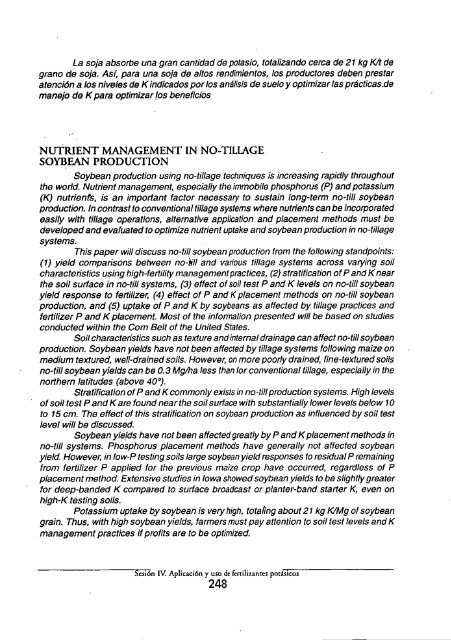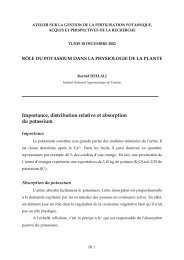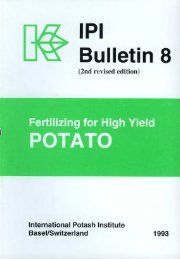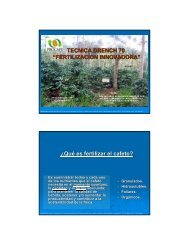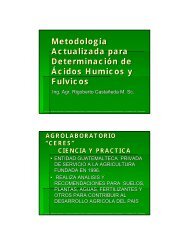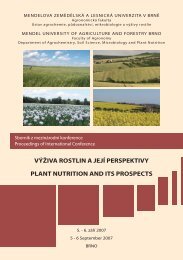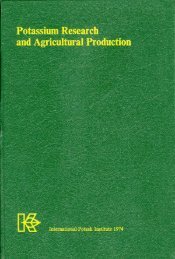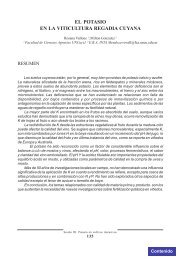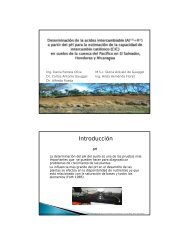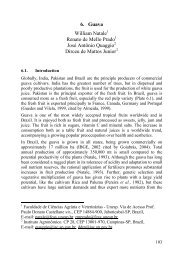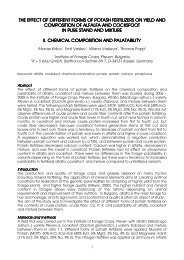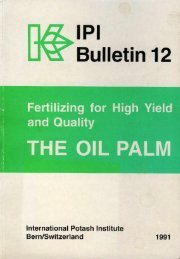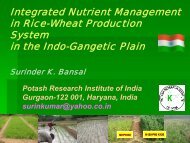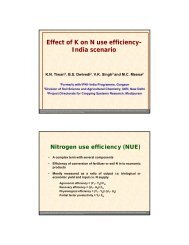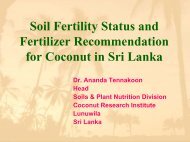Download publication - The International Potash Institute
Download publication - The International Potash Institute
Download publication - The International Potash Institute
You also want an ePaper? Increase the reach of your titles
YUMPU automatically turns print PDFs into web optimized ePapers that Google loves.
La soja absorbe una gran cantidad de potasio, totalizando cerca de 21 kg Klt de<br />
grano de soja. As, para una soja de altos rendimientos, los productores deben prestar<br />
atenci6n a los niveles de K indicados por los and/isis de suelo y optimizar las prcticas.de<br />
manejo de K para optimizar los beneficios<br />
NUTRIENT MANAGEMENT IN NO-TILLAGE<br />
SOYBEAN PRODUCTION<br />
Soybean production using no-tillage techniques is increasing rapidly throughout<br />
the world. Nutrient management, especially the immobile phosphorus (P) and potassium<br />
(K) nutrients, is an important factor necessary to sustain long-term no-till soybean<br />
production. In contrast to conventional tillage systems where nutrients can be incorporated<br />
easily with tillage operations, alternative application and placement methods must be<br />
developed and evaluated to optimize nutrient uptake and soybean production in no-tillage<br />
systems.<br />
This paper will discuss no-till soybean production from the following standpoints:<br />
(1) yield comparisons between no-671 and various tillage systems across varying soil<br />
characteristics using high-fertility management practices, (2) stratification of P and K near<br />
the soil surface in no-till systems, (3) effect of soil test P and K levels on no-till soybean<br />
yield response to fertilizer, (4) effect of P and K placement methods on no-till soybean<br />
production, and (5) uptake of P and K by soybeans as affected by tillage practices and<br />
fertilizer P and K placement. Most of the information presented will be based on studies<br />
conducted within the Com Belt of the United States.<br />
Soil characteristics such as texture and internal drainage can affect no-till soybean<br />
production. Soybean yields have not been affected by tillage systems following maize on<br />
medium textured, well-drained soils. However, on more poorly drained, fine-textured soils<br />
no-till soybean yields can be 0.3 Mg/ha less than for conventional tillage, especially in the<br />
northern latitudes (above 400).<br />
Stratification of P and K commonly exists in no-till production systems. High levels<br />
of soil test PandKare foundnearthe soilsurface with substantially lower levels below 10<br />
to 15 cm. <strong>The</strong> effect of this stratification on soybean production as influenced by soil test<br />
level will be discussed.<br />
Soybean yields have not been affected greatly by P and K placement methods in<br />
no-till systems. Phosphorus placement methods have generally not affected soybean<br />
yield. However, in low-P testing soils large soybean yield responses to residual P remaining<br />
from fertilizer P applied for the previous maize crop have occurred, regardless of P<br />
placement method. Extensive studies in Iowa showed soybean yields to be slightly greater<br />
for deep-banded K compared to surface broadcast or planter-band starter K, even on<br />
high-K testing soils.<br />
Potassium uptake by soybean is very high, totaling about 21 kg K/Mg of soybean<br />
grain. Thus, with high soybean yields, farmers must pay attention to soil test levels and K<br />
management practices if profits are to be optimized.<br />
Sesi6n IV. ApIicaci6n y uso de fertiizantes podsicos<br />
248


